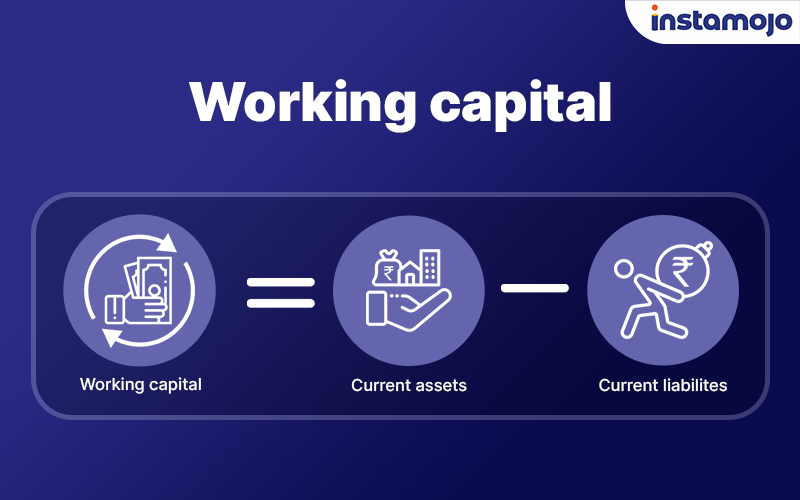Two small business owners walked into a bar. They discussed working capital. This is not a joke. Working capital is no laughing matter.
It is more than just a buzzword. Here is everything you need to understand about working capital for small businesses.
What is working capital?
To put it simply, working capital is the money a business uses for its day-to-day operations. It is the amount of money held up in operations.
In accounting terms, working capital is calculated as current assets (things you own that can be converted into cash) – (minus) current liabilities (costs you will incur in the next 12 months).
Calculating working capital helps determine the financial health of the company. It means the business has more assets than liabilities and can easily cover its liabilities.
Here are some examples of items that fall under current liabilities:
- Salaries payable
- Monthly/quarterly bills (covers utility)
And here are some examples of current assets:
- Stocks or Bonds
- Cash
Why is working capital important?
What happens when you run out of money to meet your day-to-day business needs? Bankruptcy! Having a negative working capital balance is bad because you don’t have the money to keep your business afloat and therefore, you may have to shut down.
Lenders are also sceptical of giving loans to businesses that have a poor working capital balance.
Related read: 5 Working capital problems nobody told you about
So, how much working capital does your small business need?
Working capital depends greatly on the nature of your business. If you are an online clothes or accessories retailer, you may need to maintain inventory at all times. If you’re a seasonal business, you may need to stock up at certain times of the year only.
Here’s how you can determine your working capital needs:
Calculating your working capital requires you to determine your operating cycle.
Think of the Operating Cycle as your money’s journey.
Here’s the perfect example from Brighthub:
“If a company purchases raw material on day 1, manufactures the product on day 7, and sells it on day 15, receives payment on day 23 – the operating cycle is 23 days”
The longer the operating cycle, the more working capital will be needed to sustain the operating cycle.
This is the main reason why, companies that have managed to shorten their operating cycles are more successful with their working capitals and also get more funding from investors!
💡 Then again, an excess of working capital also indicates financial inefficiency.
Tips on managing working capital smartly
Experts believe working capital management is probably the toughest accounting job for a business. That’s why we put together a few tips to help you manage your working capital, smartly:
- Plan your cash flow beforehand.
- Set realistic sales and profit goals.
- Figure out sources of short-term loans for bad/rough times and use them only when in dire need.
- Record your expenses and keep track of your accounting.
Want to manage your business better? Keep track of your sales, customers, and payments in one place with Instamojo. Check out your very own Instamojo dashboard.



2 comments
For someone who is looking to grow a small business, having the right amount of working capital is very important to ensure that the operations are smooth! This is where a working capital loan can be handy. Many fintech companies like LendingKart offer such loans if you are looking to expand your business.
I had no idea that business capital is so important for small businesses and I am glad that I found this article! You make a great point that capital is the money that a business uses for day-to-day operations and it is the current assets minus the current liabilities. It is interesting that capital shows the financial health of a company. If I was a business owner, I would definitely think about hiring a program to help me understand and improve business capital.